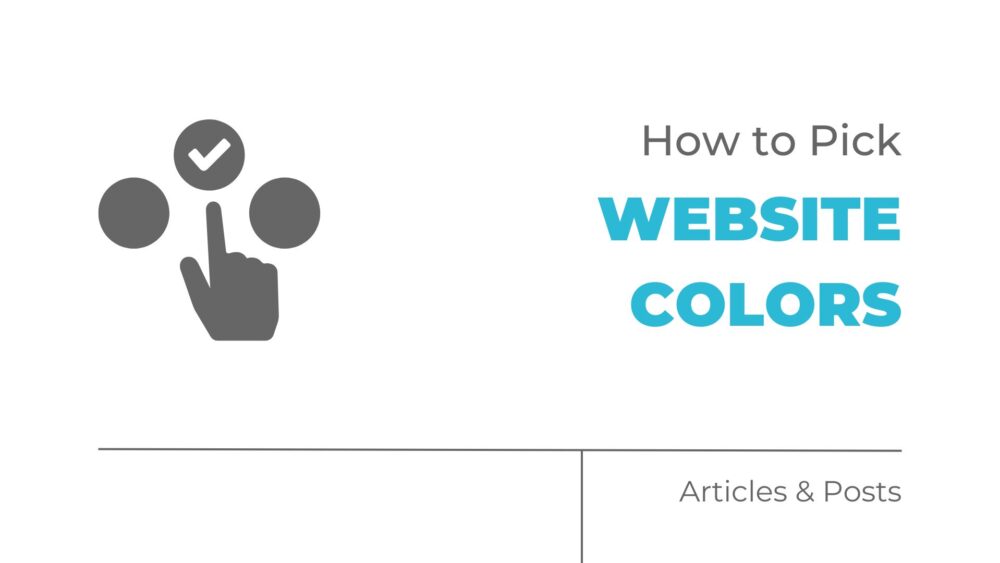Did you know that people are 80% more likely to recognize the color of your brand than its name?
Knowing how to website colors is both an art and a little bit of a science.
Web design agencies consider the brand identity, target audience, and the psychological impact of colors when deciding on the color scheme for a website.
You need to make sure it aligns with your brand’s message and appeals to your users.
Let’s dive into some simple steps and ideas to help you think about colors.
What Are the Best Practices for Selecting Website Color Schemes?
Choosing the best color scheme for your website involves a few key practices that can make your site look amazing and communicate your brand.
Understand Your Brand Identity
Your website colors should reflect your brand’s personality.
Think about your brand’s core values and the emotions you want to evoke.
Are you a playful and creative company, or more serious and professional?
The colors you choose should match these traits.
Use the 60-30-10 Rule
A great method for creating a balanced color scheme is the 60-30-10 rule.
This means 60% of your website should be a dominant color, 30% a secondary color, and 10% an accent color.
This balance helps make your design look cohesive and visually appealing.
Pick Colors That Are Easy to Read
Make sure the text on your website is easy to read.
High contrast between the text and background colors helps.
For example, dark text on a light background is a classic and effective choice.
Think About Accessibility
Accessibility should always be a priority in web design services.
Your color choices should meet the Web Content Accessibility Guidelines (WCAG) standards.
This includes providing enough contrast and avoiding color combinations that are hard for color-blind users to distinguish.
How Does Color Psychology Influence Website Design?
Colors can evoke emotions and influence perceptions, making them a powerful tool in web design.
Understanding color psychology can help you create a website that connects with your audience.
The Impact of Warm and Cool Colors
Warm colors like red, orange, and yellow are linked to energy, passion, and excitement.
They can be used to draw attention to important parts of your site.
Cool colors like blue, green, and purple are calming and trustworthy, often used in professional and health-related websites.
Using Color to Influence Behavior
Different colors can affect how people behave.
For instance, blue can create a sense of trust and security, which is why it’s often used by banks and financial institutions.
Green is associated with nature and health, making it a popular choice for eco-friendly and wellness brands.
Cultural Considerations
Colors can have different meanings in different cultures.
It’s important to think about your target audience’s cultural background when picking your color scheme.
What might be a positive color in one culture could have negative connotations in another.
For example, in Western cultures, white often represents purity and weddings, while in some Asian cultures, white is associated with mourning and funerals.
Therefore, it’s important to consider your target audience’s cultural background when choosing colors, as a color that is positive in one culture could be negative in another.
Applying These Principles to Your Web Design
Picking the right colors isn’t just about personal preference.
It’s about strategy.
What you choose impacts how users feel and perceive your brand.
Analyze Your Competitors
Look at the color schemes used by your competitors.
This can give you insight into industry standards and help you stand out.
But make sure your choices still fit your brand identity.
Test Different Schemes
Don’t be afraid to try different color combinations.
Tools like Adobe Color can help you visualize various schemes.
A/B testing can also show how different color schemes affect user engagement and conversion rates.
Consider the Cost of Website Design
When planning your website design, think about how your color choices might affect the cost of website design.
Custom colors and complex designs might need more development time and resources.
Balancing looks with budget is key.
Keep It Simple
Simplicity often works best.
A clean and straightforward color scheme can make your website more user-friendly and professional.
Avoid overwhelming your visitors with too many colors.
At the End of the Day
Choosing the right colors for your website is a key step in building a strong online presence.
By understanding your brand identity, using best practices like the 60-30-10 rule, and considering the psychological and cultural impacts of color, you can create a visually appealing and effective website.
Remember to prioritize readability and accessibility, and don’t shy away from experimenting with different color schemes to see what resonates best with your audience.
A thoughtful approach to color selection can make your website more engaging and clearly convey your brand’s message.


Comments are closed.